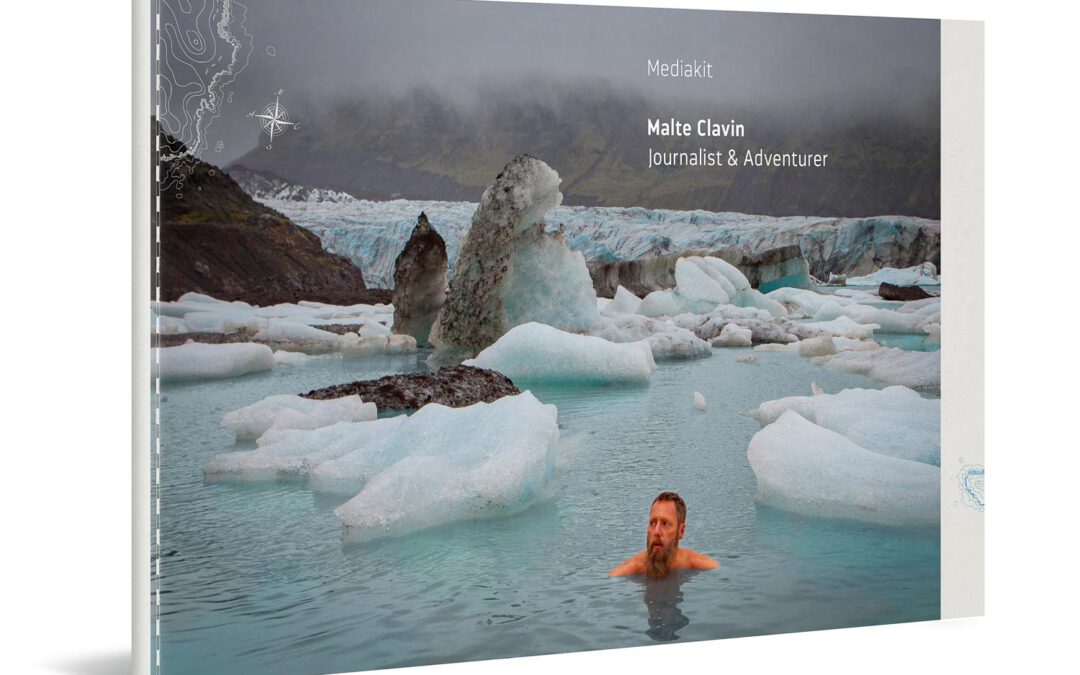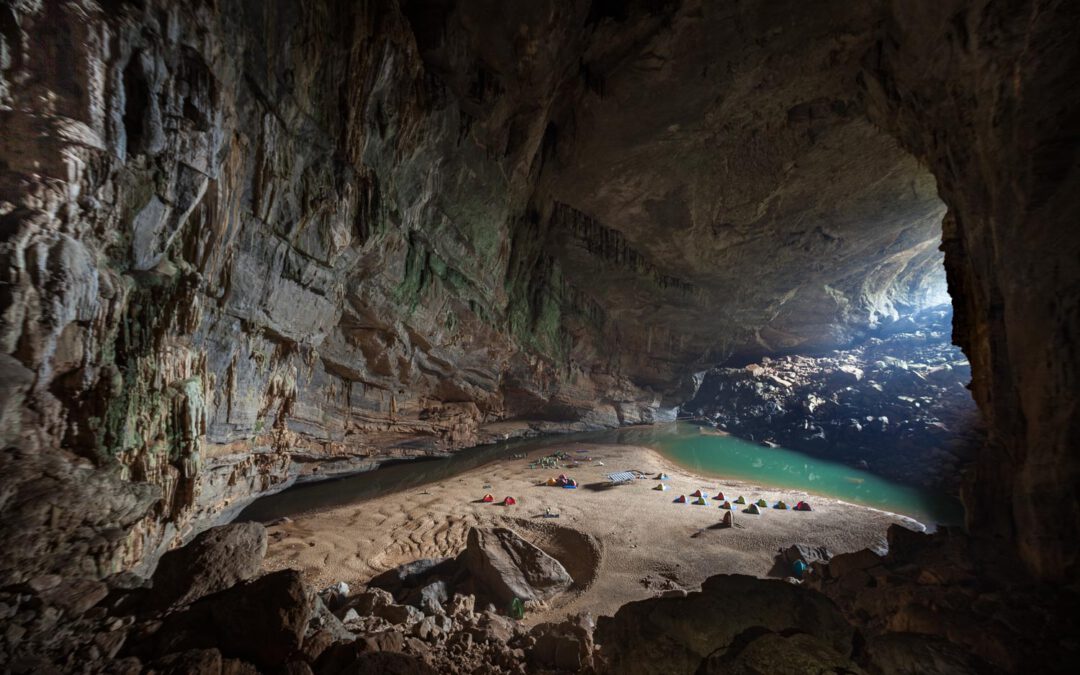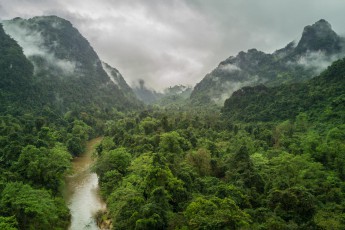
In the Phong Nha Ke Bang National Park shortly after a heavy rain shower.
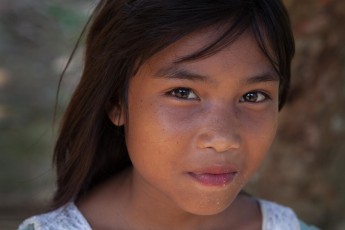
On the way to Hang En Cave, we pass the only village of Ban Doong - with just 35-40 inhabitants. I smile at this girl and point to my camera. She smiles back and nods.
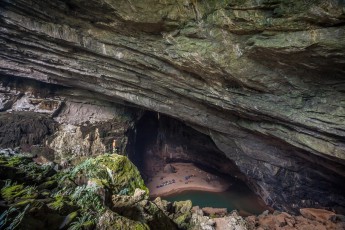
Our first night camp - seen from the entrance of the slope En Cave. What looks like small color dots are our one and two person tents. For the further size comparison: On the green heel to the left of the middle is an expedition assistant.
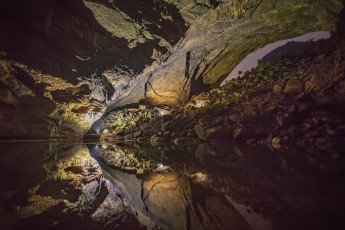
Hang En Cave: In the lake in front of the huge boulder pile three lights reflect. In the lights you can see black outlines of our three lightning technicians.
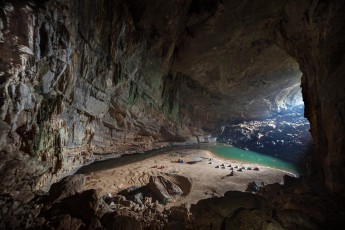
First day of the five-day expedition through the largest cave in the world: Son Doong Cave in Vietnam. On the way there we cross the already huge looking Hang En cave and spend the night near the entrance.
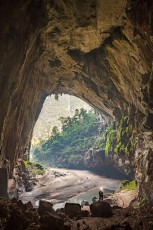
The huge exit of the Hang En Cave. A little to the left of the man on the rock in the foreground one can see the tiny cave explorer Ian 'Watto' Watson in the dried-up riverbed.
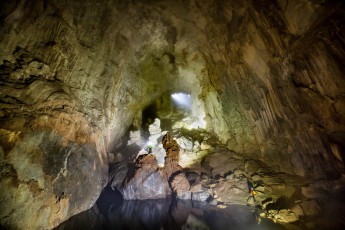
View back to the entrance of the Son Doong Cave, 400 meters away, through which daylight illuminates clouds. There we rafted 80 meters down into the cave.
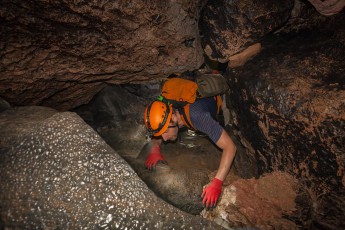
One of the rare moments in which I do not wear the camera. I have just given it to the porter, otherwise it would have been scarred against the rocks. And the porter, of course, makes a picture at once. By the way: The gloves protect you from the sharp stones.
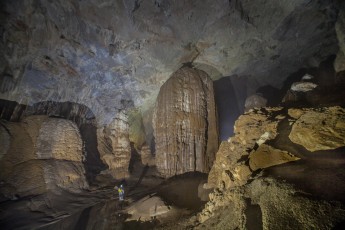
British cave explorer Ian 'Watto' Watson in front of one of the giant stalagmites of the Son Doong Cave.
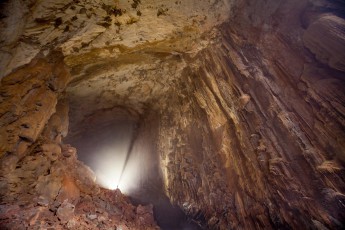
The Son Doong Cave always surprises with almost incredible dimensions. Our assistant, who lights the ceiling on a rock, can be seen just as a black line. It is also unbelievable that this breathtakingly large and beautiful cave was only fully explored and surveyed in 2010. Huge areas of the Phong Nha Ke Bang National Park have never been entered by humans. What a tempting terra incognita for my discoverer's heart!
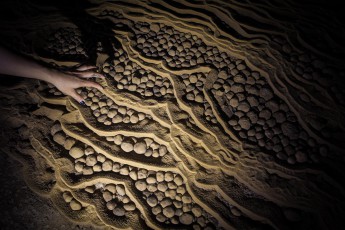
Extremely rare and very fascinating: Cave pearls in the Son Doong Cave, Vietnam. Cave pearls are something like 'rolling stalagmites': Water drops that fall from the ceiling into a depression stick aragonite crystals around an initially tiny core. In the depression the pearl moves and grows with every drop - over many millennia. Usually, cave pearls are not larger than bird eggs, in the Son Doong Cave they often have the size of tennis balls.
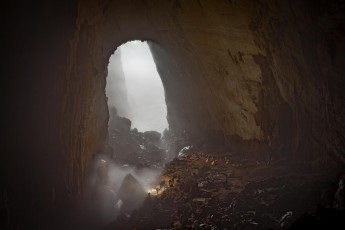
Son Doong Cave, Vietnam: View of Camp 1, our night camp. In the foreground a companion lights up towards a cloudy swath. In the background the light shines from the opening of a doline 300 meters deep to the ground. Dolines are natural shafts, which are caused by the collapse of the cave roof.
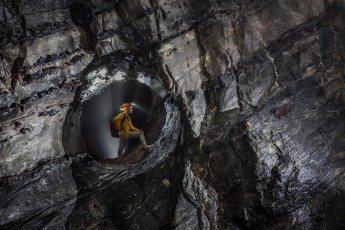
The largest cave passage of the Son Doong is 5 kilometers long, 145 meters wide and 200 meters high. This is equivalent to a volume of 139 times the Empire State Building. Nevertheless, there are also tighter places - like this here.
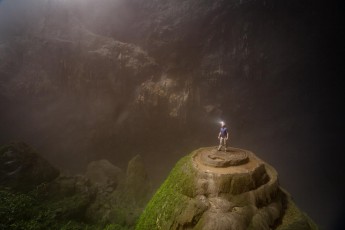
Here I stand in the second doline of the cave and look lost up to the edge 200 meters above me.
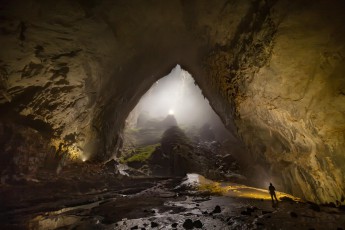
View back to the first doline. On the elevation in the doline in the center of the picture stands a porter and shines in our direction.
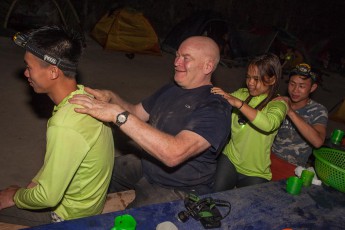
A cave expedition goes to the bone. At the end of the day, Khanh, Watto, Anette and Luong loosen their shoulder muscles with their proven 'massage chain'.
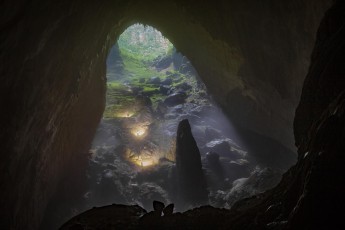
Three of us climb with their headlamps on 80 meters up to the second doline.
At the bottom of the second doline, a separate ecosystem with cave jungle has formed over the course of the millennium. From here you can even see the trees.
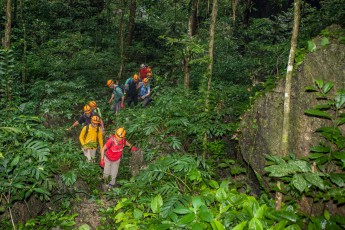
Something very special in the Son Doong cave are the two jungles on the bottoms of the huge shafts, the so-called dolines. A fertilizer cocktail made of high humidity, bat dung and daylight has sprouted its own ecosystem with dense bushes and tall trees.
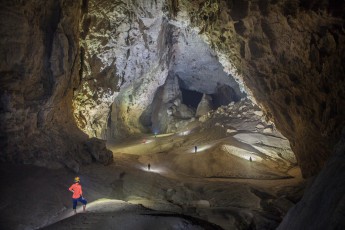
Only with very strong 32,000 Ansi Lumen LEDs the gigantic chambers of the Son Doong can be adequately illuminated.
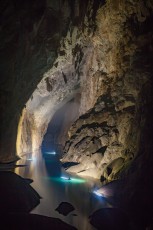
From my point of view, I look 600 meters to the end of the Son Doong Cave. About 30 meters above the boats you can see a white veil: clouds! The cave has its own climate! From time to time we march through suddenly appearing 'steam baths', which then turn out to be clouds. At the end of the cave one would still have to climb the 200-meter-high, very slippery 'Great Wall of Vietnam' and then struggle through knee-deep mud to reach the back exit of the cave. Since this is definitely too dangerous and demanding, my cavemates and I paddle over the lake before we make the one-and-a-half-day march back to the entrance.
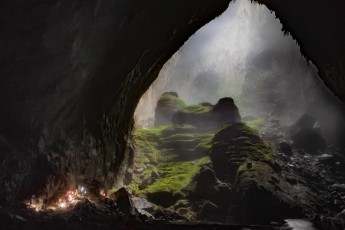
The expedition members on their way back through the second doline.
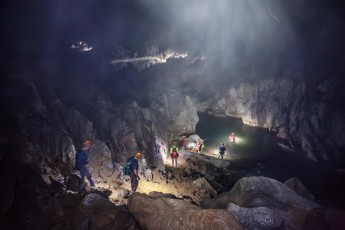
The Son Doong cave is not for unsporting or anxious. Again and again we have to rappel, abseil, or cross rivers, where we sink to the chest.
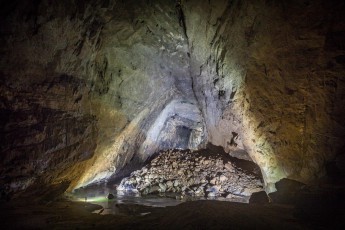
View through the middle room of the Hang En Cave. Here the light of our cave lamps mingles with the daylight that flows in through the exit of the cave. The Hang En Cave is huge already : On the top of the boulder pile one can identify the green jersey of an expedition member in front of a dark square in the background.
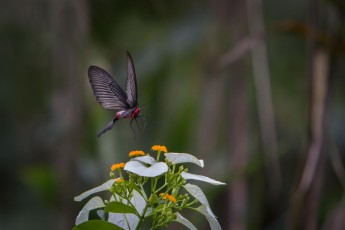
More than 5,500 insects and 140 species of mammals live in the Phong Nha Ke Bang National Park - many of them only here.
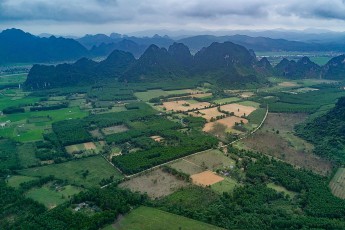
Rice paddies and vegetable fields near Phong Nha. The region is one of the fast-growing tourist destinations of Southeast Asia. Two reasons for this are the Phong Nha and Paradise Cave - they are easily accessible as well as magnificent. To date, more than 230 caves have been discovered and surveyed. Many more are still expected in the remote areas of the national park.
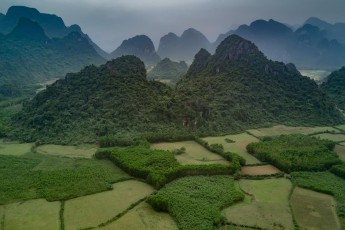
Near Phong Nha, Vietnam. Outside the national park the few areas between the rugged dense karst rocks are used for the cultivation of rice and vegetables.
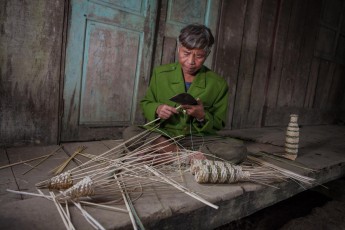
Dinh Lau, born in 1955, is part of the ethnic minority of the Aram, which has only 200 members in Vietnam. Here he is building a bottle-like eel fish trap of bamboo. After the foundation of the national park, his entire village was resettled to the edge of the park. A questionable project because the Aram must not hunt or gather for their livelihood in their original habitat. Today they depend to a large extent on government subsidies.
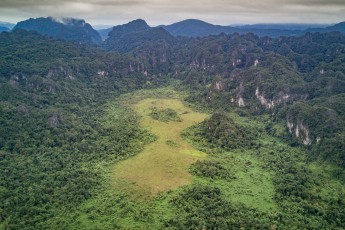
Deep in the national park Phong Nha Ke Bang: In many places a human has never penetrated, especially where there are no natural water resources. Unimaginable, but here they are: white spots on the world map!
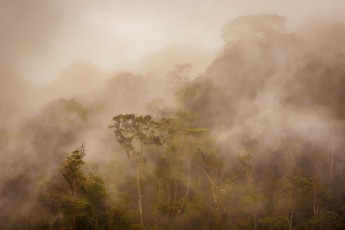
Phong Nha Ke Bang National Park: Clouds wind drift through the tree tops - a beautiful natural drama.
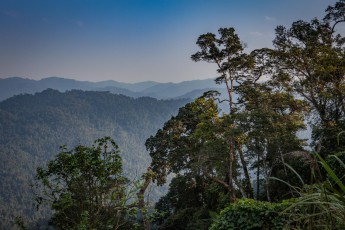
Endless green in the Phong Nha Ke Bang Nationalpark - and finally 'lucky with light'. In two weeks Vietnam I only had 4 (!) sunny hours.
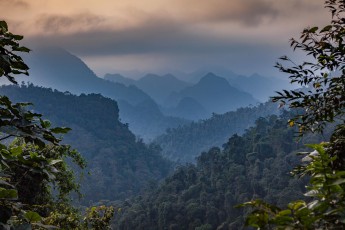
Phong Nha Ke Bang National Park. In the two weeks that I photographed here, I come to barely four hours of sunshine. Just before sundown, this is one of the very rare clear moments that allow a view across the park.
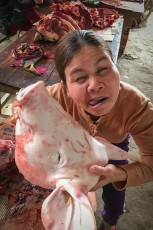
A market woman in Phong Nha is driving her little jokes with me.
